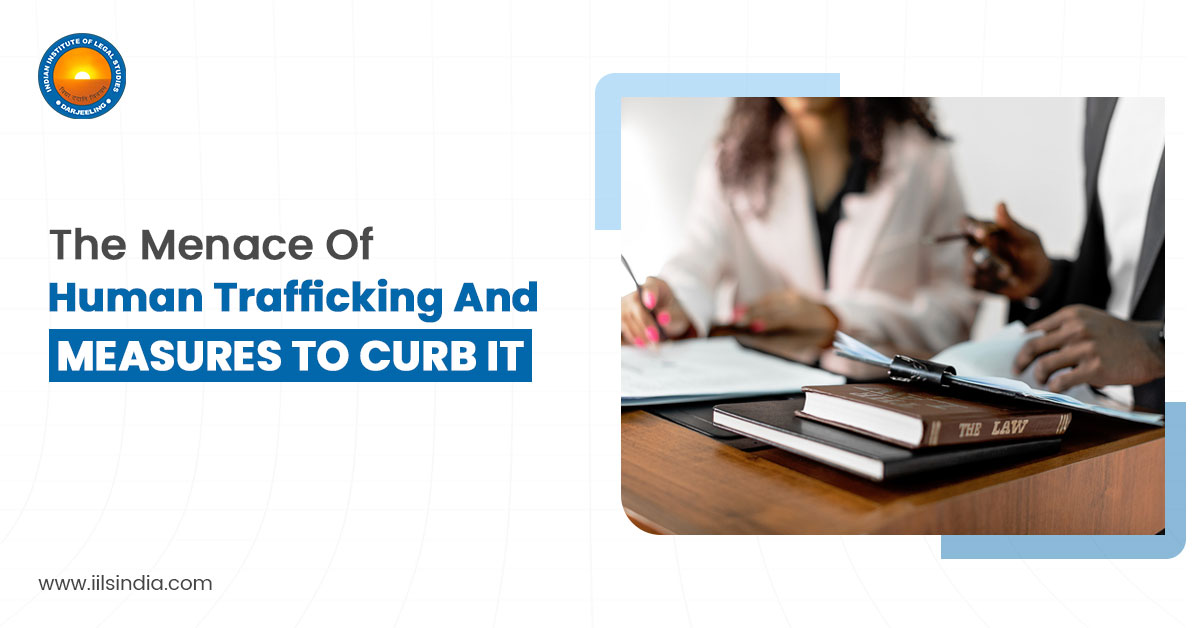Introduction
Human trafficking, often referred to as modern-day slavery, is one of the most heinous crimes plaguing societies worldwide. It involves the illegal trade of humans for purposes such as forced labor, sexual exploitation, and organ trafficking. Despite international efforts to combat this crisis, millions of men, women, and children continue to fall victim to this global menace. Many best colleges for law conduct legal awareness on human trafficking so that people in the society are aware of the problem and do not fall prey to it.
Understanding Human Trafficking
Human trafficking is defined as the recruitment, transportation, transfer, harboring, or receipt of persons by means of threat, force, coercion, deception, or abuse of power for the purpose of exploitation. It can take many forms, including:
1. Sexual Exploitation: Victims, predominantly women and children, are trafficked for forced prostitution or other forms of sexual abuse.
2. Forced Labor: People are trafficked to work under harsh, exploitative conditions, often without proper compensation, safety, or the ability to escape.
3. Child Trafficking: Children are trafficked for illegal adoption, forced begging, or to work in hazardous environments.
4. Organ Trafficking: Victims are forced into selling their organs, often under duress, with no regard for their health or safety.
Human trafficking is a multi-billion-dollar criminal industry, and its victims often endure unimaginable suffering, trauma, and lifelong consequences.
Causes of Human Trafficking
Several factors contribute to the proliferation of human trafficking, including:
1. Poverty: People in economically disadvantaged areas are more vulnerable to trafficking as they seek better opportunities or fall prey to false promises of jobs or a better life.
2. Lack of Education and Awareness: Many victims of human trafficking are unaware of their rights and the risks posed by traffickers, making them easy targets.
3. Political Instability: War-torn regions or areas facing civil unrest often experience an increase in trafficking due to the breakdown of law and order.
4. Demand for Cheap Labor and Commercial Sex: The demand for cheap labor in industries like agriculture, construction, and manufacturing drives forced labor trafficking. Similarly, the demand for prostitution fuels sex trafficking.
5. Corruption and Weak Law Enforcement: Corruption in law enforcement agencies and judicial systems allows traffickers to operate with impunity in many parts of the world.
The Impact of Human Trafficking
The consequences of human trafficking are devastating for individuals and society as a whole. Victims often face:
● Physical and Psychological Trauma: Many trafficking victims suffer from long-term physical injuries, psychological trauma, and emotional distress. This includes depression, anxiety, and post- traumatic stress disorder (PTSD).
● Stigma and Social Isolation: Victims, particularly those trafficked for sexual exploitation, often face societal stigma, which makes reintegration into society difficult.
● Loss of Dignity and Freedom: Victims are deprived of their basic human rights and freedoms, living under constant threat and in dehumanizing conditions.
For society, human trafficking undermines social stability, perpetuates cycles of poverty and inequality, and erodes the moral fabric of communities.
Legal and Social Measures to Curb Human Trafficking
The fight against human trafficking requires a multi-faceted approach involving legal reforms, international cooperation, public awareness, and strong law enforcement. Below are some of the key measures that can help curb human trafficking:
1. International Cooperation:
- Human trafficking often crosses borders, requiring international collaboration to combat. Organizations like the United Nations Office on Drugs and Crime (UNODC) and the International Labour Organization (ILO) are working with governments worldwide to combat trafficking networks.
- Countries need to strengthen their border controls and cooperate on intelligence-sharing to track and dismantle trafficking syndicates.
2. Public Awareness and Education:
- Raising awareness about human trafficking is essential in preventing it. Public education campaigns can help vulnerable populations recognize the signs of trafficking and understand their rights.
- Schools and local communities should educate young people about the dangers of trafficking, and governments should invest in awareness programs that target high-risk regions.
3. Victim Support and Rehabilitation:
- Victims of trafficking need access to proper medical, psychological, and legal support to help them rebuild their lives. Governments and non-governmental organizations (NGOs) must provide safe shelters, counseling, vocational training, and legal aid for victims.
- Specialized rehabilitation centers must be established to help victims reintegrate into society, free from stigma and fear.
4. Addressing Root Causes:
- Tackling the underlying causes of trafficking, such as poverty, unemployment, and lack of education, is critical in reducing vulnerability to trafficking.
- Governments should implement social welfare programs, economic development initiatives, and employment opportunities to address the socio-economic factors that push individuals into the hands of traffickers.
5. Corporate Accountability:
- Many victims of human trafficking are exploited in industries like agriculture, manufacturing, and construction. Holding corporations accountable for their supply chains can help reduce the demand for forced labor.
- Companies must conduct thorough audits of their suppliers to ensure that no human trafficking is involved at any level of production.
Conclusion
Human trafficking is one of the most egregious violations of human rights, exploiting the most vulnerable members of society. To effectively combat this menace, governments, international organizations, law enforcement agencies, and civil society must work together. Strengthening laws, raising awareness, and supporting victims are vital steps toward eradicating this form of modern-day slavery. Best colleges for law conducts programmes in schools and local communities to educate young people about the dangers of trafficking, and governments should invest in awareness programs that target high-risk regions. Every individual deserves to live with dignity, freedom, and security, and it is our collective responsibility to ensure that human trafficking is eradicated from every corner of the world.

